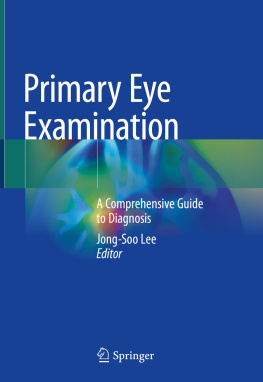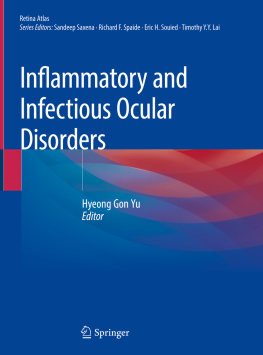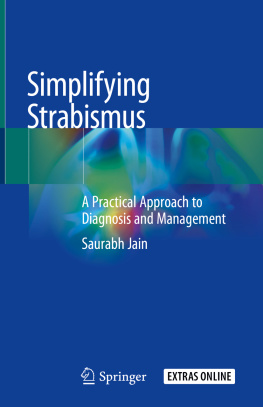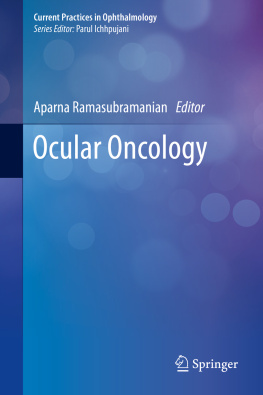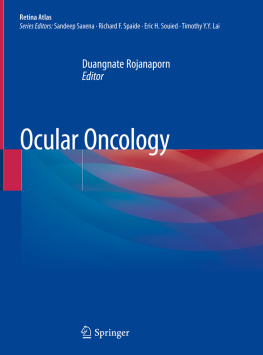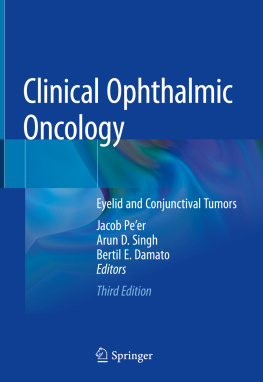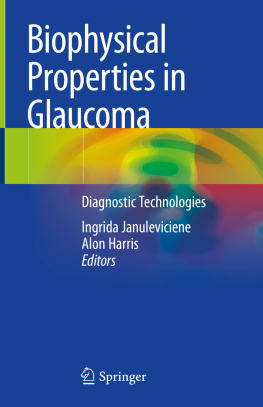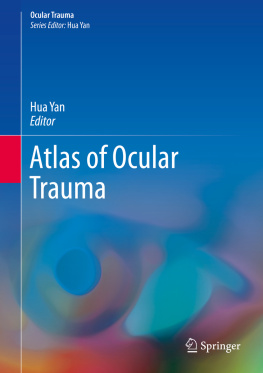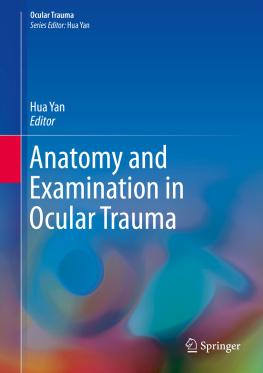Contents
Landmarks
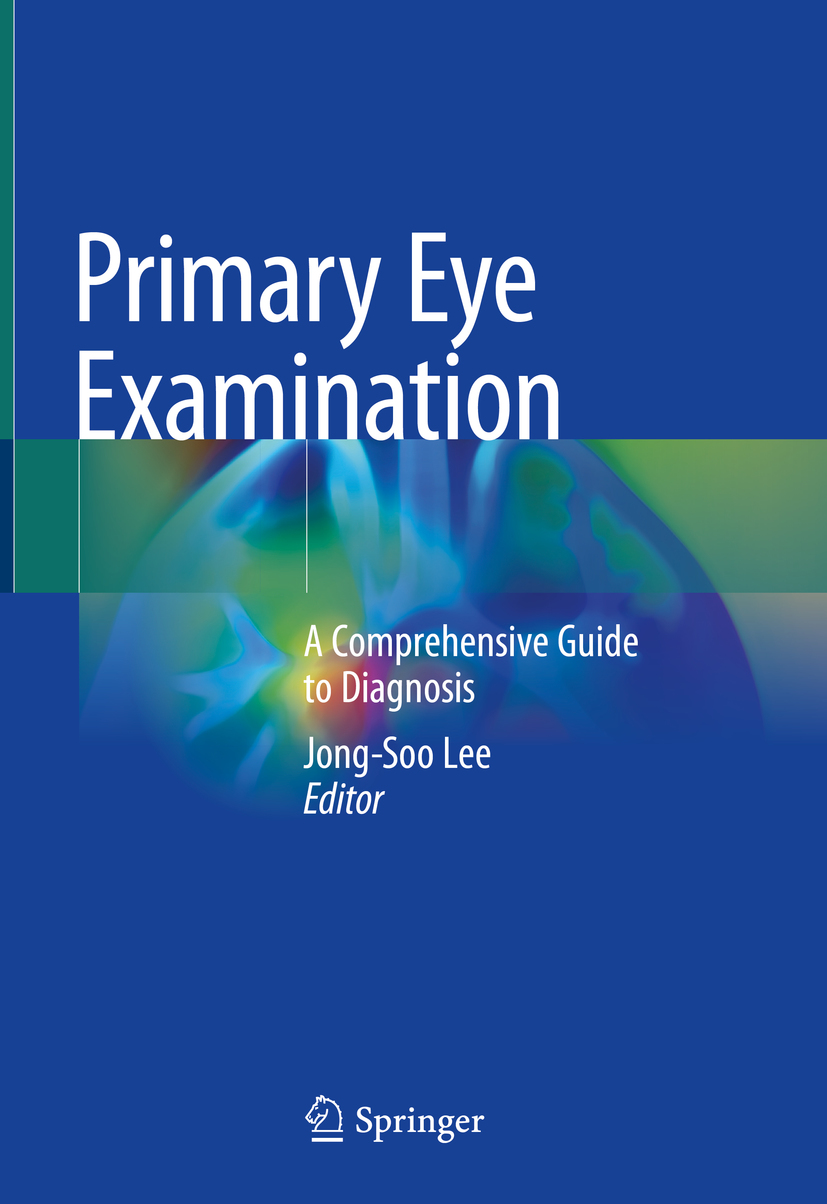
Primary Eye Examination A Comprehensive Guide to Diagnosis
Editor
Jong-Soo Lee
Department of Ophthalmology, Pusan National University School of Medicine, Busan, South Korea
ISBN 978-981-10-6939-0 e-ISBN 978-981-10-6940-6
https://doi.org/10.1007/978-981-10-6940-6
Library of Congress Control Number: 2018968146
Springer Nature Singapore Pte Ltd. 2019
This work is subject to copyright. All rights are reserved by the Publisher, whether the whole or part of the material is concerned, specifically the rights of translation, reprinting, reuse of illustrations, recitation, broadcasting, reproduction on microfilms or in any other physical way, and transmission or information storage and retrieval, electronic adaptation, computer software, or by similar or dissimilar methodology now known or hereafter developed.
The use of general descriptive names, registered names, trademarks, service marks, etc. in this publication does not imply, even in the absence of a specific statement, that such names are exempt from the relevant protective laws and regulations and therefore free for general use.
The publisher, the authors, and the editors are safe to assume that the advice and information in this book are believed to be true and accurate at the date of publication. Neither the publisher nor the authors or the editors give a warranty, express or implied, with respect to the material contained herein or for any errors or omissions that may have been made. The publisher remains neutral with regard to jurisdictional claims in published maps and institutional affiliations.
This Springer imprint is published by the registered company Springer Nature Singapore Pte Ltd.
The registered company address is: 152 Beach Road, #21-01/04 Gateway East, Singapore 189721, Singapore
Contents
Ji-Eun Lee
Ji-Eun Lee
Jae Ho Jung
Jong-Ho Park
Hye-Shin Jeon , Jung-Yul Park and Hee-Young Choi
Hye-Shin Jeon and Hee-Young Choi
Jung-Yul Park and Hee-Young Choi
Jong-Soo Lee
Jong-Soo Lee
Jae Ho Jung
Jong-Hoon Shin
Keun-Heung Park
Keun-Heung Park
Ji-Woong Lee
Han-Jo Kwon and Sung-Who Park
Ik-Soo Byon
Young-Min Park and Seung-Min Lee
Ji-Eun Lee , Je-Hyun Seo and Young-Min Park
Jae-Jung Lee and Sung-Who Park
Springer Nature Singapore Pte Ltd. 2019
Jong-Soo Lee (ed.) Primary Eye Examination https://doi.org/10.1007/978-981-10-6940-6_1
1. Visual Acuity Test
Ji-Eun Lee
(1)
Department of Ophthalmology, Pusan National University School of Medicine, Busan, South Korea
Ji-Eun Lee
The visual acuity test is the best way to show the status of eye. It includes uncorrected and corrected visual acuity, distant and near visual acuity, binocular and monocular visual acuity, decimal and fractional visual acuity, visual acuity measured with one and parallel object, logMAR (minimal angle of resolution) visual acuity, and central and out-of-central visual acuity. In general, visual acuity is the central visual acuity when viewed from the foveola. The visual acuity in ophthalmology refers to the corrected visual acuity which is the corrected visual acuity measured by refraction. If the uncorrected visual acuity is poor and the corrected visual acuity is good, the refractive error should be considered. If the corrected visual acuity is bad, a pathology from the eye to the central nervous system should be considered. The appropriate visual acuity test should be selected and recorded according to the subject and purpose. If the patient has the history of using contact lenses, cataract surgery, or LASIK surgery, record them on your visual acuity chart.
1.1 Distant Vision Test
1.1.1 Indication
It is possible to examine at 3 years of age or older. At 38 years of age, the visual acuity is measured higher when using single object chart than the parallel chart. That is, all persons who can read the target in the visual acuity chart are all candidates.
1.1.2 Purpose
The causes of visual impairment include refractive errors and eye diseases involving visual pathway. The refractive error can be improved by correction, but for the cases of eye diseases, it is difficult to improve the visual acuity only by correcting the refractive error. Therefore, visual acuity test can be a great help in determining the cause of vision impairment.
1.1.3 Method
1.1.3.1 How to Represent Visual Acuity
The minimum separable visual acuity represents the ability to distinguish between two points or two lines. The angle formed by these two points or two lines on the eye is called minimum visual angle and is indicated by visual acuity. In other words, the angle formed by the two straight lines from the two points of the object under consideration to the nodal point of the eye is referred to as the visual angle, and the size of the retinal image is determined thereby. The closer the distance of the same size object is from the eye, the closer the visual angle becomes. The larger the size of the object at the same distance, the larger is the visual angle. Visual acuity is represented by the reciprocal of visual angle, visual acuity = 1/visual angle (minute) (Fig. ).
Fig. 1.1
The reciprocal of the minimum visual angle is visual acuity. If the visual angle Q is 2 minutes, the visual acuity is 0.5
1.1.3.2 Visual Acuity Chart
The visual acuity chart includes a decimal visual acuity chart, a fractional visual acuity chart (Snellen visual acuity chart), and a logMAR chart. The devices of the visual acuity chart include reflection type, transmission type, and projection type.
The decimal visual acuity is 0.1 intervals from 0.1 to 1.0 and 1.2, 1.5, and 2.0 afterward. Because it is expressed as a reciprocal of the minimum visual angle, the arrangement does not show the same interval. 0.1 and 0.2 and 0.9 and 1.0 are both one step, but the visual angle is 10 minutes and 5 minutes in the former and 1.1 minutes and 1 minute in the latter. The former is twice the difference, and the latter is 1.1 times, which does not represent the same difference. Therefore, if 0.125 and 0.16 are inserted between 0.1 and 0.2, 0.25 is inserted between 0.2 and 0.3, and 0.7 and 0.9 are subtracted, the arrangement of decimal visual acuity chart becomes almost equal.
The fractional visual acuity (Snellen method) has the same arrangement of visual acuity, and unlike the decimal visual acuity charts, it is possible to indicate by two-step visual acuity increase or decrease.
The logarithmic visual acuity chart displays the visual acuity in logMAR, which is the logarithm of the minimal angle of resolution (MAR). Each step of the visual acuity chart is at the same interval, so an arithmetic average is possible to be calculated.
The logarithmic visual acuity chart has five characters per line, and the left and right character spacing is a spacing of the size of each character, and the size ratio of the large character and the lower character is kept at a constant ratio of about 5:4, respectively. The spacing between the upper and lower lines is the size of the character in the lower row. They are arranged at the same interval at which the index is reduced by 0.1 by one logMAR at the top. This visual acuity chart is used at a distance of 4 m. It can measure up to 20/957, that is, 0.02 at 1 m, which is useful for patients with low vision.

